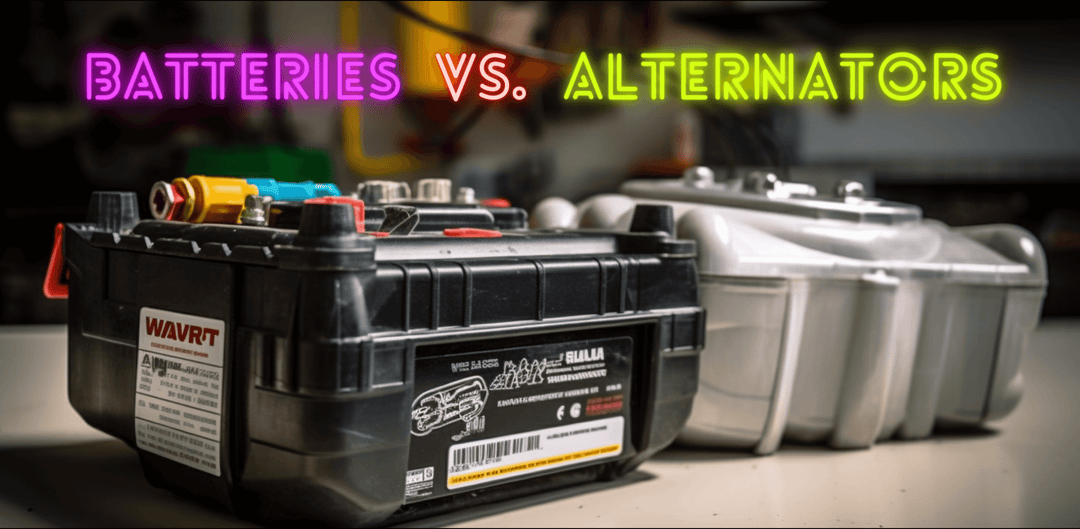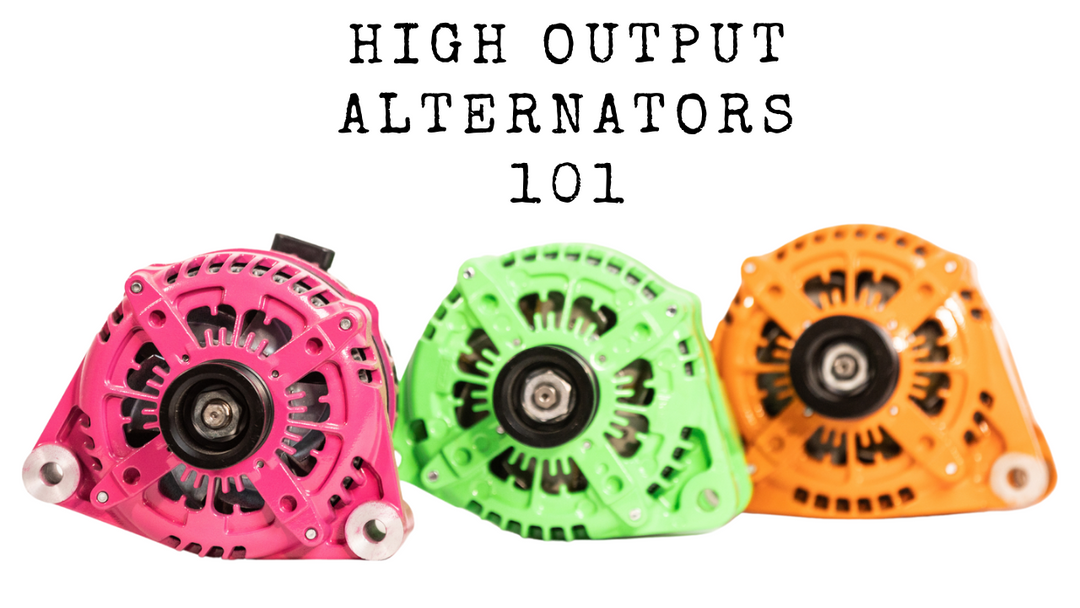Understanding The Need For A Shorter Belt For High Output Alternator

Understanding The Need For A Shorter Belt For High Output Alternator
Alternator belts are an integral part of the vehicle’s engine system. Without them, the alternator won’t be able to generate electricity or charge the battery.
But when it comes to high-output alternators, standard-length belts may need to provide more power for optimal performance. That’s why understanding the need for shorter belt lengths is essential for automotive engineers and technicians alike.
By recognizing how a shorter belt affects the design and capabilities of a high-output alternator, professionals can ensure that their vehicles remain reliable and efficient. In this article, we’ll explore what makes a short belt necessary for these applications and give tips on choosing the right one.
The Role Of Shorter Belts In Enhancing Your High-Output Alternator’s Efficiency
Using shorter belts with a high-output alternator can be miraculous in terms of the dramatic increase in efficiency. This is because these pulleys and belts are designed to work together as an integrated system - any variation from this ideal, like too much or too little tension on the belt, will lead to decreased efficiency.
With a shorter belt length, you’ll get increased tension, leading to higher load capacity for your alternator, allowing it to reach peak performance levels faster and provide more power when needed.
It’s important to note that the size of the alternator and its pulley should be considered before changing out a standard-length belt for a shorter one. If neither component is incompatible, problems such as slipping or misalignment may lead to further issues.
That said, if correctly installed and maintained, a shorter belt can be just what you need to get maximum output from your high-output alternator!
Selecting The Right Belt Size For Your Jsalternators High Output Alternator
Choosing the right size belt for your JsAlternators high output alternator is essential. A serpentine belt that is too long or short can lead to slipping and premature wear on components, meaning you won’t get the most out of your alternator’s performance.
The best way to ensure you have the correct length is by using Dayco’s Auto And Heavy-Duty Belts Dimensional And Identification Guide tool. You only need your vehicle’s make, model, year, and engine type (or license plate number).
From there, subtract or add half an inch from the effective length in the guide to find the ideal alternator belt size for your application. With this information at hand, finding a compatible replacement should be simple!
The Impact Of Belt Tension On Your Alternator’s Performance And Longevity
Proper belt tension is essential for maximizing the performance and longevity of any alternator.
Too loose belts will cause belt slip, resulting in decreased power output from the alternator.
Similarly, a belt with too much tension can create excessive wear on the pulleys and the serpentine belt.
Use a spring tensioner to guide proper belt tension to ensure optimal operation.
If your current spring tensioner does not provide enough tension or grip on your alternator’s shorter serpentine belt, consider replacing it with one designed specifically for high-output applications.
With careful attention to proper alignment and tensioning, you can guarantee the reliable operation of your alternator while avoiding premature wear and tear on its components.
Proper Belt Installation And Maintenance For Optimal Alternator Function
An alternator’s proper installation and maintenance can directly impact its output quality.
Selecting the right belt for your vehicle ensures that your alternator runs at optimal RPMs.
As a rule of thumb, belts should be shorter than the original equipment manufacturer's (OEM) specified size; this allows the alt to run faster and generate more power.
When selecting a replacement belt, please ensure it fits appropriately around all pulleys with no binding or slippage while providing the diameter matches correctly.
Also, please check out belts regularly for wear-and-tear or signs of cracking or fraying, as these are indicators that they need to be replaced soon.
Following these tips will help keep your vehicle running smoothly and efficiently by allowing your alternator to perform optimally.
Troubleshooting Common Belt-Related Issues In High-Output Alternators
A properly installed and maintained belt is essential for optimal alternator function, but what about when that’s not?
This section will discuss troubleshooting common belt-related issues in high-output alternators.
If you’re experiencing a dip in voltage from your alternator, it may be time to replace the factory belt with a smaller pulley or an overdrive pulley. This can help increase efficiency by providing more torque at higher RPMs.
When replacing the belt, ensure all components are aligned correctly - improper alignment could lead to further wear and tear on the strap and other system parts.
It’s also important to regularly inspect belts for signs of cracking or fraying, which can indicate damage or excessive strain due to misalignment.
Taking these precautions can help ensure the prolonged operation of your alternator without any unexpected drops in performance.
Frequently Asked Questions
What Is The Difference Between A Shorter Belt And A Regular Belt?
A shorter belt is a specialized type of drive belt specifically designed to reduce the size and weight of an engine’s pulley system, allowing for more efficient operation.
Unlike regular belts, which are typically long enough to wrap around multiple components, a shorter belt only encompasses one or two parts at most.
This makes them ideal for applications where space is limited or the output requirements exceed what can be achieved with a standard-length belt.
Shorter belts increase power transfer efficiency while reducing wear on components due to their smaller circumference.
How Often Should The Belt Be Replaced?
The short of it? When it comes to high-output alternator belts, you should replace them as often as possible!
A single belt can be the difference between a smooth ride and a bumpy one - using a shorter belt ensures an even smoother journey.
Hyperbole aside, replacing your belt regularly is essential for maintaining peak performance from any automotive system; frequent replacement will help reduce wear and tear over time, ensuring that your engine runs like clockwork without fail.
Are Shorter Belts Suitable For All Types Of High Output Alternators?
Regarding high-output alternators, shorter belts are generally suitable for any engine.
However, it is essential to consider the size and shape of the belt when selecting one for your particular application.
Factors such as pulley diameter, number of grooves in each pulley, and overall length can all affect the performance of a shorter belt.
Also, it should be taken to ensure that the material used will withstand the temperature generated by an increased load on the alternator.
Considering these factors, you can be sure your engine has an appropriately sized belt designed specifically for its power requirements.
Are There Any Safety Considerations To Be Aware Of When Installing A Shorter Belt?
While installing a shorter belt on a high-output alternator may seem counterintuitive, several safety considerations must be considered.
Automotive engineers should ensure the replacement belt is rated for the power and speed of the motor and is an appropriate length for tensioning.
Any slack in the system must also be accounted for to reduce potential stress points and wear on other components.
Quality materials and verified techniques will help eliminate problems during installation and operation.
Are There Any Special Tools Required For Installing A Shorter Belt?
Installing a shorter belt for high-output alternators requires specialized tools to ensure the job is completed safely and correctly.
A deep-welted socket, an adjustable or crescent wrench, and a set of metric sockets will allow you to tension the new belt properly.
Also, a torque wrench is recommended to help avoid over-tightening when securing the nuts on either end of your newly installed belt.
Conclusion
In conclusion, using a shorter belt for high-output alternators is the optimal choice. It will provide more efficient operation, increased power transfer, and improved durability, saving time and money in the long run. This makes them an ideal solution for those looking to get maximum performance from their engines.
When installing a shorter belt, one must consider specific safety considerations, such as ensuring proper tensioning of the straps or avoiding contact with sharp edges on components. Additionally, special tools may be needed to facilitate installation depending on your vehicle’s make and model.
Overall, understanding why a shorter belt is advantageous for high-output alternators is essential for any automotive engineer seeking maximum efficiency out of their vehicles. Considering all these points before deciding can help you ensure optimal performance at a minimal cost.




